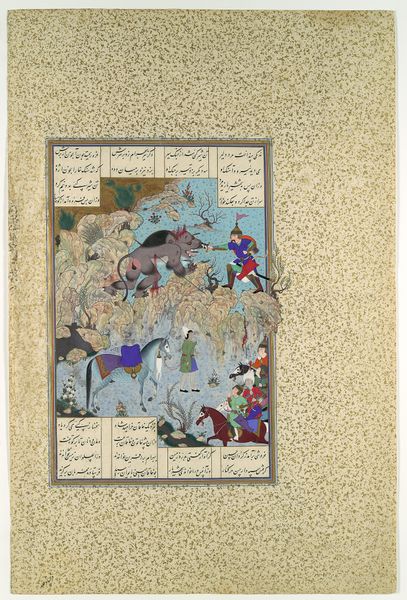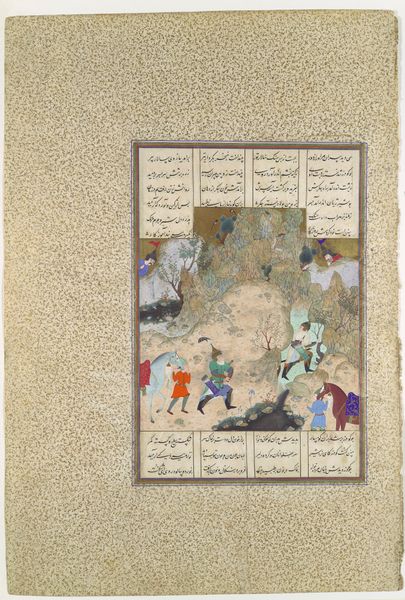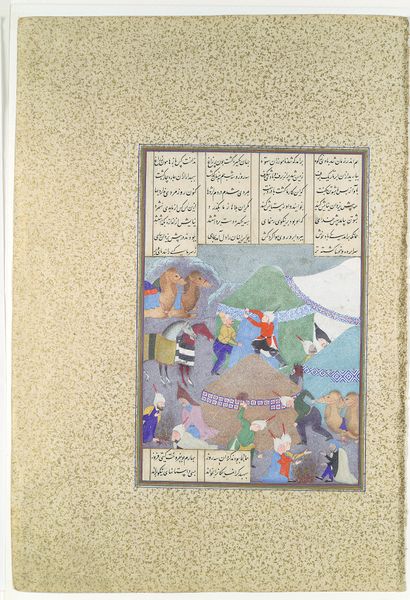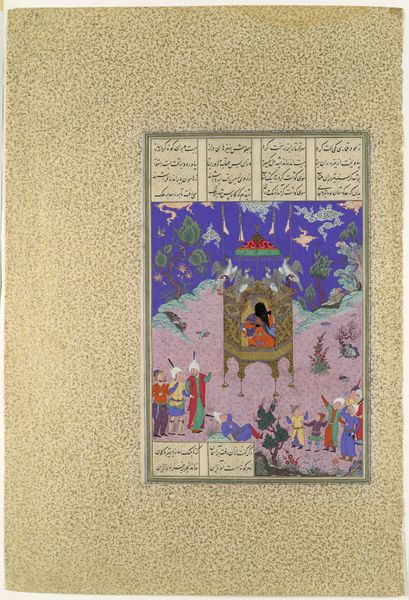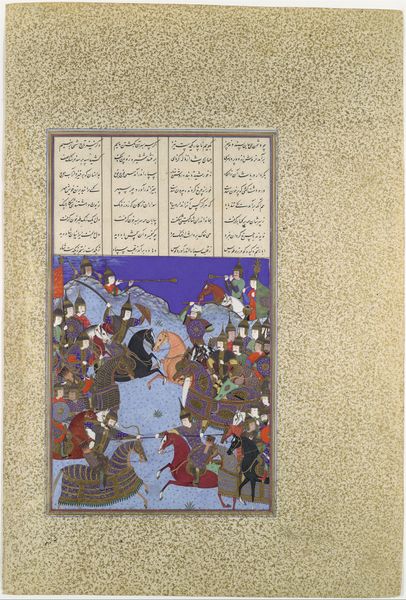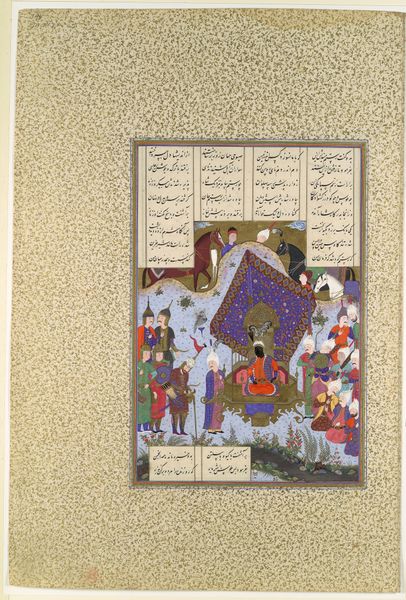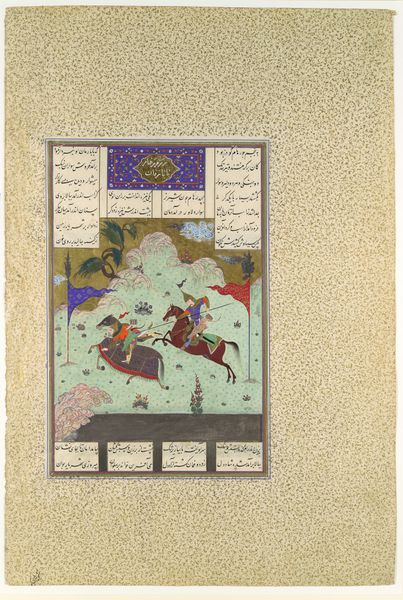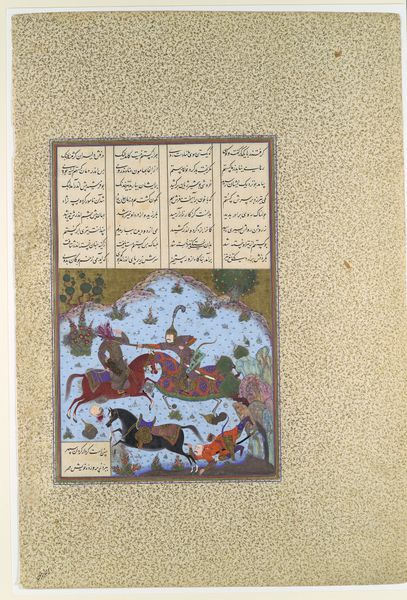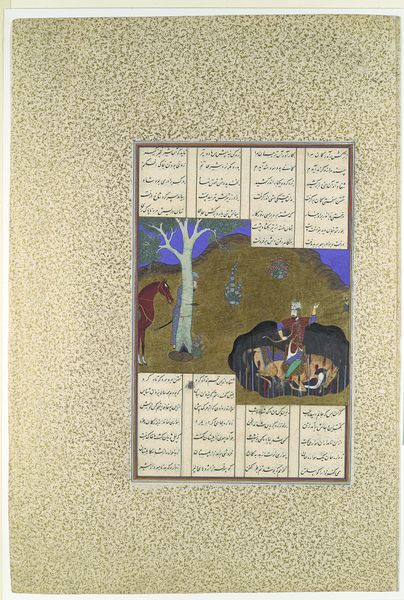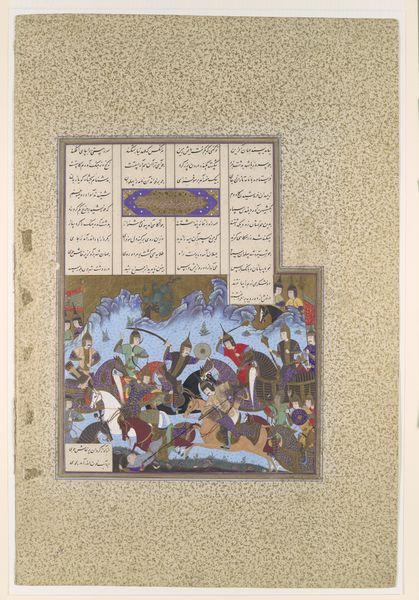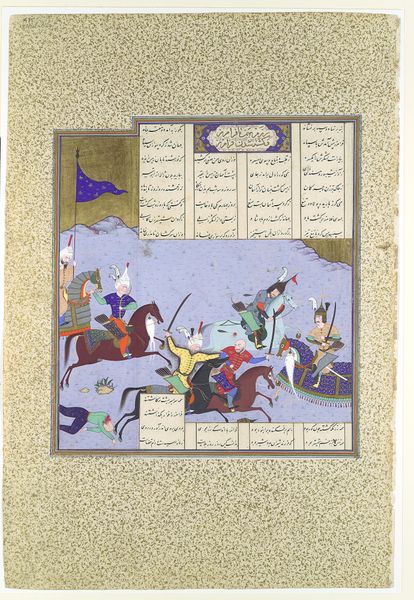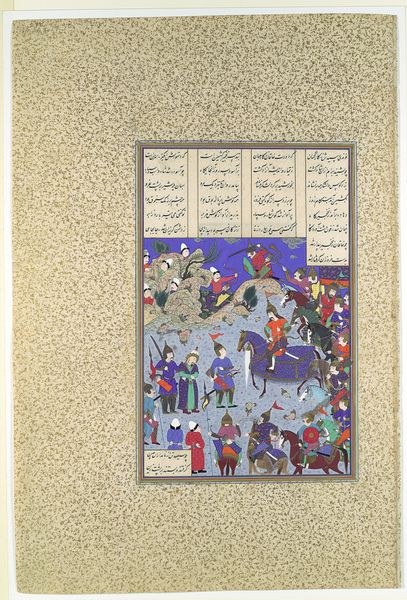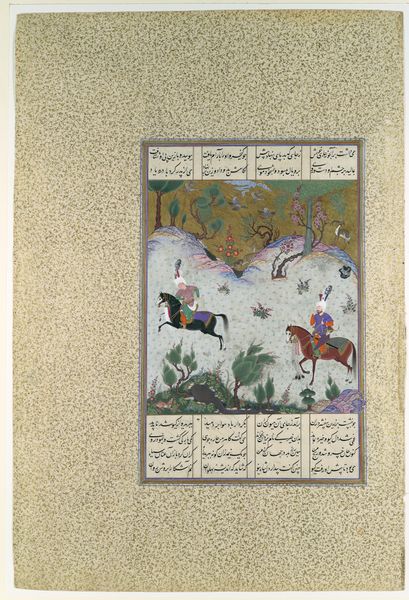
"Isfandiyar's Fourth Course: He Slays a Sorceress", Folio 435v from the Shahnama (Book of Kings) of Shah Tahmasp 1500 - 1555
0:00
0:00
tempera, painting, ink
#
tempera
#
painting
#
landscape
#
figuration
#
ink
#
horse
#
men
#
islamic-art
#
history-painting
#
miniature
Dimensions: Painting: H. 7 3/16 in. (18.3 cm) W. 7 1/16 in. (18 cm) Page: H. 18 11/16 in. (47.5 cm) W. 12 5/8 in. (32.1 cm) Mat: H. 22 in. (55.9 cm) W. 16 in. (40.6 cm)
Copyright: Public Domain
Curator: Welcome! Today, we'll be looking at "Isfandiyar's Fourth Course: He Slays a Sorceress," a folio from the Shahnameh, or Book of Kings, of Shah Tahmasp, created between 1500 and 1555. It is currently held in the collection of the Metropolitan Museum of Art. Editor: Immediately, I'm struck by the intense drama depicted here. The composition, with the figures poised in action against that swirling, almost chaotic landscape, is quite powerful. Curator: Indeed. This piece is rendered with ink, tempera, and gold on paper, a hallmark of Persian miniature painting. We see Isfandiyar, a heroic figure from Persian mythology, engaged in combat with a sorceress. It's more than just an action scene; it encapsulates themes of heroism, deception, and the triumph of good over evil. Editor: What I find interesting is how the painting visualizes power dynamics, not just in the immediate narrative of slaying a sorceress but also in a broader socio-political sense. Consider the patron for whom it was made: a Safavid Shah. Curator: Yes, understanding the cultural context is paramount. The Shahnameh was a hugely significant text, solidifying Persian identity and kingship, as such this lavishly illustrated manuscript served as a potent symbol of royal authority. The use of such vibrant colours, especially the blues and reds, creates a rich and dazzling effect. Notice, also, how every element, from the flora to the warriors’ garments, is rendered with meticulous detail. Editor: Exactly. And it raises questions about how women, magic, and "otherness" are represented. Was this sorceress depicted as purely evil, or does her image contain any trace of ambiguity, maybe as a challenge to normative masculinity? Curator: The stylized landscape serves a key role. The turbulent cloud formations and rocky terrain mirror the internal turmoil of the narrative and underscore the supernatural nature of Isfandiyar's challenges. The landscape itself becomes a character in this drama. Editor: Agreed. Plus, there's an inherent tension here. On the one hand, this is about celebrating Persian heritage, but the inherent patriarchy also raises questions about marginalization. It's essential to consider this manuscript within the spectrum of historical and contemporary ideologies. Curator: That is true. The interplay of form and content certainly generates varied, thought-provoking interpretations. Editor: Precisely. Examining artworks such as this challenges us to dissect the multifaceted narratives they present. Thank you.
Comments
No comments
Be the first to comment and join the conversation on the ultimate creative platform.
